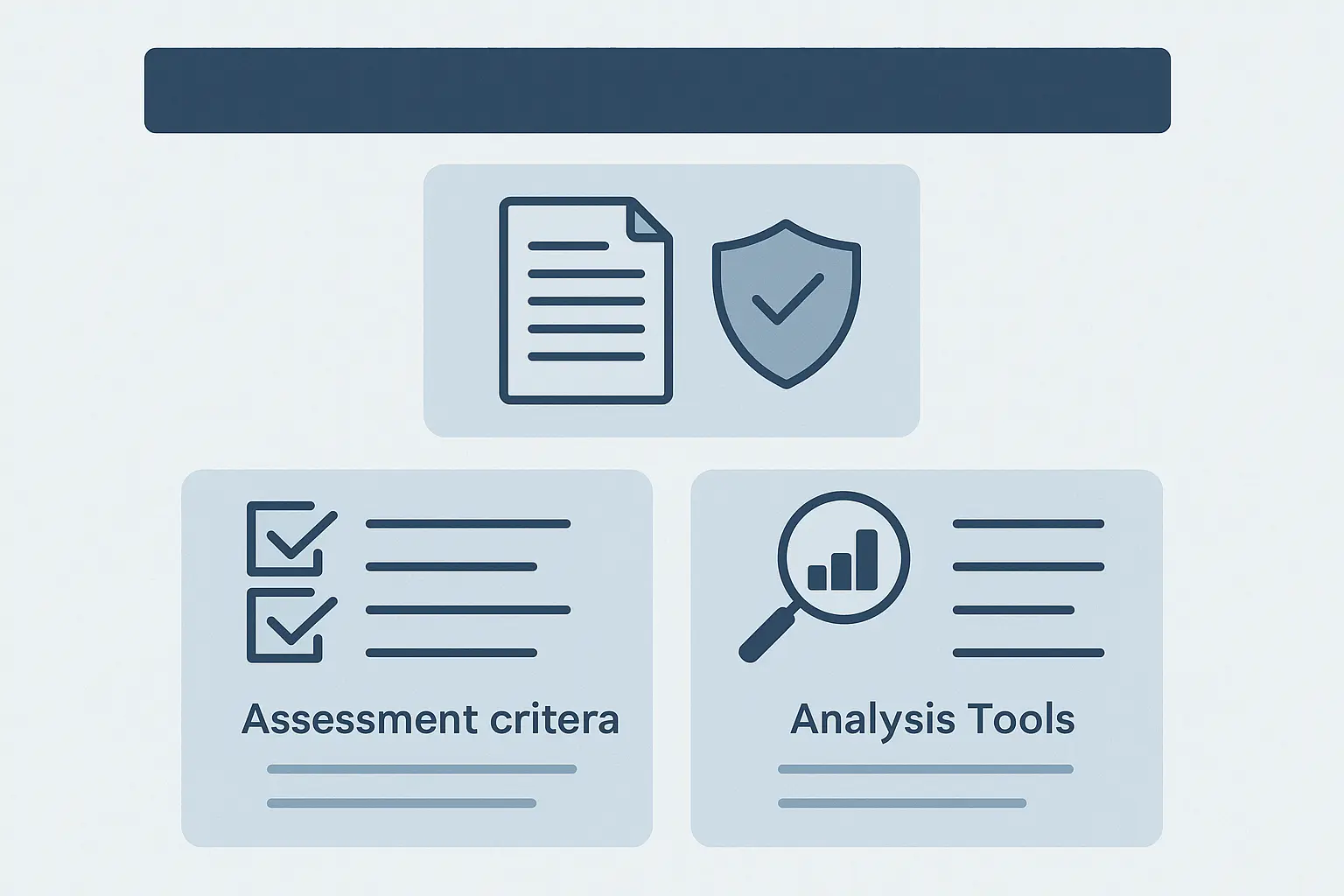I was scrolling through leadership research last month when I stumbled across a stat that made me stop cold: 77% of organizations lack sufficient leadership depth across all levels. Honestly? It explains a lot about why I’ve watched so many businesses struggle over the years.
Look, I’ll be honest—I used to think studying leadership case studies was just academic busy work. Then I started noticing something: the leaders who consistently succeeded weren’t just winging it. They were studying what worked, learning from other people’s failures, and adapting proven strategies to their own messy situations. That’s exactly what we’re going to dig into today.

Table of Contents
-
How to Choose Leadership Case Studies That Actually Matter
-
25 Game-Changing Leadership Case Studies Across Six Categories
-
Crisis Leadership That Saved Companies and Lives
-
Digital Transformation Leaders Who Rewrote the Rules
-
Sustainable Leadership That Proves Profit and Purpose Can Coexist
-
Innovation Leaders Who Turned Impossible Into Inevitable
-
Team Building Masters Who Created Unstoppable Cultures
-
Turnaround Artists Who Brought Dead Companies Back to Life
-
-
Evaluating Leadership Case Studies: What Works and What Doesn’t
-
Why These Leadership Lessons Matter for Your Business Growth
TL;DR
-
Pick leadership case studies that actually relate to your situation—don’t waste time reading about Fortune 500 CEOs if you’re running a 20-person team
-
Crisis leadership is about being both empathetic and decisive (not choosing one or the other), plus telling people the truth even when it’s uncomfortable
-
Digital transformation works when you change how people think first, then worry about the technology—Satya Nadella proved this at Microsoft
-
Sustainable leadership isn’t just feel-good stuff; companies like Patagonia and Unilever show it actually drives better business results
-
Innovation leaders succeed by paying attention to trends everyone else is ignoring, then betting big when they spot something real
-
Great company culture happens when leaders are transparent, invest in their people, and actually live their values instead of just talking about them
-
Turnaround leadership means being brutally honest about what’s broken, focusing on the most important stuff first, and executing consistently
How to Choose Leadership Case Studies That Actually Matter
Here’s the thing—I’ve probably wasted 50 hours reading leadership case studies that taught me absolutely nothing. The worst ones are those feel-good stories where everything worked out perfectly and there’s no real explanation of why.
So let me save you some time. When you’re picking which leadership examples to study, you need to look for four main things: whether it actually applies to your situation, what you’re trying to learn, whether you can trust the source, and if you can actually do something with what you learn.
|
Selection Criteria |
High-Quality Indicators |
Red Flags |
Implementation Impact |
|---|---|---|---|
|
Relevance |
Similar industry challenges, comparable organizational size, current market conditions |
Outdated context, vastly different scale, irrelevant market dynamics |
Direct application of strategies |
|
Learning Objectives |
Clear skill development focus, measurable outcomes, complexity matching experience level |
Vague success stories, no specific competencies addressed |
Targeted skill improvement |
|
Credibility |
Verified sources (Harvard Business School, McKinsey), comprehensive data, multiple perspectives |
Unverified claims, missing financial data, single viewpoint |
Confidence in strategy adoption |
|
Implementation |
Actionable insights, realistic resource requirements, clear risk assessment |
Abstract concepts, unrealistic requirements, hidden risks |
Successful strategy execution |
Relevance and Applicability
Look, I get it—reading about how some Fortune 500 CEO managed 200,000 employees sounds impressive. But if you’re running a team of 12, it’s probably not going to help you much. I learned this the hard way after spending way too much time on case studies that had nothing to do with my actual challenges.
That said, don’t get too narrow in your thinking either. Some leadership principles work everywhere. When Johnson & Johnson handled the Tylenol crisis back in 1982, their approach to honest communication became a blueprint that works whether you’re running a massive corporation or a small local business.
Scale matters though. If you’re leading a 50-person startup, you need examples that match your reality. When Sarah, a startup CEO with 75 employees, faced a product recall, she didn’t study how Mary Barra handled GM’s massive ignition switch crisis. Instead, she looked at how Buffer handled their security breach in 2013—transparent communication, quick customer notification, but at a scale she could actually relate to and afford.
The key is finding cases that deal with similar market conditions to what you’re facing. Cases about digital transformation, remote work challenges, and economic uncertainty are going to serve you better than outdated examples from when business was predictable and stable.
Learning Objectives Alignment
Before you dive into any case study, get clear on what you actually want to learn. Are you trying to get better at making tough decisions? Improve how you communicate during crises? Figure out how to motivate your team? Different cases teach different things.
If you’re new to leadership, start with straightforward examples where you can clearly see cause and effect. Don’t jump into complex situations with tons of moving parts—you’ll just get confused. Seasoned leaders can handle the messy, ambiguous stuff where there’s no clear right answer.
The best cases show you actual results with real numbers. Revenue growth, market share changes, employee satisfaction scores—concrete evidence that the leader’s actions actually worked, not just feel-good stories about how everyone loved them.
Credibility and Documentation
This might sound obvious, but stick with sources you can trust. Harvard Business School cases go through serious fact-checking. McKinsey studies include real data analysis. These organizations stake their reputations on getting things right.
Data quality separates useful cases from fluff. Look for detailed financial information, clear timelines, and documented outcomes. If everything sounds vague or too good to be true, it probably is.
The most valuable cases show you different perspectives and explore what could have gone wrong. This helps you understand why certain approaches worked and what you need to watch out for if you try similar strategies.
Practical Implementation
After reading a good leadership case study, you should be able to identify at least three specific things you could try in your own situation. If everything feels too abstract or only works in very specific circumstances, keep looking.
Think about what you’d actually need to execute similar approaches—time, money, people, resources. Some leadership strategies require massive investment, while others you can start tomorrow with what you already have.
The most honest case studies talk about what could have gone wrong and how leaders managed those risks. This perspective helps you make smart decisions about which strategies are worth attempting.
25 Game-Changing Leadership Case Studies Across Six Categories
I’ve organized these 25 leadership case studies into six categories that cover the most common leadership challenges you’ll face. Each one shows how leaders navigated complex problems, made tough decisions, and achieved real results that transformed their organizations.

Crisis Leadership That Saved Companies and Lives
Crisis leadership is about being both empathetic and decisive—something most leaders think they have to choose between. These five cases show how leaders maintained trust during extreme pressure while making difficult decisions that actually solved problems instead of just managing them.
1. Jacinda Ardern’s COVID-19 Response
Ardern showed the world what it looks like to be tough and caring at the same time during a global crisis. She implemented early lockdowns that seemed extreme, but she explained the reasoning behind every decision in a way that helped people understand why it mattered.
Here’s what made her approach work: she didn’t just announce policies and expect people to follow them. She treated citizens like adults who deserved to understand the human cost of inaction. Instead of positioning protective measures as government overreach, she framed them as collective responsibility.
The thing is, this approach works whether you’re managing a country or explaining to your team why you have to make budget cuts. People can handle bad news if you’re honest about why it’s necessary and what you’re doing about it.
2. Johnson & Johnson’s Tylenol Crisis Management (1982)
When seven people died from cyanide-laced Tylenol capsules, CEO James Burke faced an impossible choice: protect short-term profits or prioritize public safety. His decision to recall 31 million bottles nationwide cost $100 million and seemed financially insane at the time.
Market share dropped from 37% to 7% overnight. Burke’s board probably thought he’d lost his mind. But here’s what happened: the company’s transparent communication and immediate action to redesign packaging with tamper-evident seals completely rebuilt consumer trust. Within a year, market share recovered to 30%.
The key insight? Burke treated the crisis as an opportunity to prove what the company actually stood for, rather than just a problem to minimize. This approach turned a potential brand killer into a trust-building moment that strengthened customer loyalty for decades.

3. Captain Chesley “Sully” Sullenberger’s Hudson River Landing
Sully’s “Miracle on the Hudson” shows what split-second decision-making looks like under ultimate pressure. When US Airways Flight 1549 lost both engines after bird strikes, he had 208 seconds to save 155 lives.
But his leadership went beyond just piloting skills. He used crew resource management principles, clearly communicating with his co-pilot and flight attendants while keeping passengers calm through his steady authority. Every single person survived because one leader made the right decisions under impossible circumstances.
The lesson here isn’t that you need to be a hero pilot. It’s that clear communication and staying calm under pressure can save situations that seem hopeless.
4. Reed Hastings’ Netflix Content Crisis
Netflix faced massive subscriber backlash in 2011 when Hastings split DVD and streaming services, raising prices by 60%. The Qwikster announcement triggered 800,000 subscription cancellations and sent stock prices tumbling.
Hastings initially defended the decision, but he quickly recognized his mistake. He apologized publicly, cancelled the Qwikster plan, and doubled down on original content investment. This crisis response led to Netflix’s transformation into a global streaming giant with over 230 million subscribers by 2023.
Sometimes the best crisis management involves admitting you were wrong and pivoting quickly rather than stubbornly defending bad decisions. That’s harder than it sounds, but it works.
5. Mary Barra’s GM Ignition Switch Crisis
Barra inherited a deadly crisis involving faulty ignition switches linked to 124 deaths. Instead of deflecting blame or trying to minimize the problem, she took full responsibility and implemented comprehensive safety reforms.
Her approach, detailed in our General Motors crisis and reinvention analysis, focused on cultural change within GM. She emphasized that safety concerns should be escalated immediately regardless of cost implications.
When a mid-size manufacturing company discovered defective components in their products, the CEO applied Barra’s approach by immediately halting production, conducting a comprehensive investigation, and implementing new quality control processes. Despite initial costs of $2.3 million, the transparent response maintained customer relationships and prevented larger liability issues.
Digital Transformation Leaders Who Rewrote the Rules
Here’s the thing about digital transformation—it’s not really about technology. It’s about changing how people think first, then worrying about the tech stuff. These leaders figured that out before their competitors did.
6. Satya Nadella’s Microsoft Transformation
Everyone talks about Nadella like he’s some kind of tech prophet, but let’s be real—Microsoft was already a massive company with incredible resources. The guy had advantages most of us don’t have.
That said, when he became CEO in 2014, Microsoft’s market cap was $300 billion, and the company was stuck in a PC-focused world that was going mobile fast. His biggest move wasn’t buying new technology—it was shifting the entire company culture from “know-it-all” to “learn-it-all.”
The most radical thing he did? Embracing partnerships with former competitors like Apple. He put Microsoft Office on iPads and focused on making Microsoft services work everywhere rather than forcing customers into Microsoft-only ecosystems.
Under his leadership, Microsoft’s market cap exceeded $3 trillion by 2024. The transformation wasn’t just technological—it was cultural. Nadella proved that changing how people think matters more than changing what technology they use.

7. Andy Jassy’s AWS Leadership at Amazon
Jassy built Amazon Web Services from a concept to an $80 billion revenue stream by recognizing cloud computing’s potential before most competitors understood what was happening. He started AWS in 2006 when most companies were still buying their own servers.
His approach focused on customer obsession and long-term thinking. While competitors worried about cannibalizing existing business models, Jassy built infrastructure that would eventually power Netflix, Airbnb, and thousands of other companies.
This strategic vision parallels the customer-centric approach examined in our Amazon case study, showing how leadership drives market innovation.
8. Jensen Huang’s NVIDIA AI Pivot
Huang’s story is wild, but also kind of frustrating if you’re not in tech. The guy bet everything on AI before anyone knew what ChatGPT was, pivoting NVIDIA from gaming graphics to AI computing despite initial skepticism from investors and industry analysts.
He invested heavily in CUDA architecture and AI research when most people thought it was a niche market. When ChatGPT sparked the AI boom in 2022, NVIDIA was positioned as the essential infrastructure provider. Stock price increased over 1000%, and market cap reached $1.8 trillion.
For most of us, the lesson isn’t “bet your company on emerging tech.” It’s more like “pay attention to trends that everyone else is ignoring.” Sometimes the biggest risks offer the biggest rewards.
9. Brian Che
9. Brian Chesky’s Airbnb Digital-First Strategy
Chesky transformed hospitality by creating digital platforms that enabled strangers to share homes globally. His leadership focused on building trust mechanisms and community standards that made the impossible seem normal.
The key insight was recognizing that technology could solve trust problems that had prevented peer-to-peer hospitality for centuries. Chesky’s platform design and community management approach created an entirely new industry category.
10. Daniel Zhang’s Alibaba Ecosystem Expansion
Zhang expanded Alibaba beyond e-commerce to create an integrated digital ecosystem including payments (Alipay), cloud computing, and logistics. His leadership approach focused on connecting different services to create network effects that benefited all participants.
This ecosystem strategy made Alibaba indispensable to Chinese commerce while creating multiple revenue streams that reduced dependence on any single business model.
Sustainable Leadership That Proves Profit and Purpose Can Coexist
Here’s where I get a little skeptical. A lot of sustainable leadership case studies sound amazing until you realize the leaders involved were already billionaires who could afford to be generous. But some of these examples actually show practical approaches that work for normal businesses too.
|
Leader |
Company |
Sustainability Initiative |
Business Impact |
Key Insight |
|---|---|---|---|---|
|
Yvon Chouinard |
Patagonia |
Earth ownership transfer |
$3B company donated to climate causes |
Purpose-driven ownership structures |
|
Paul Polman |
Unilever |
Sustainable Living Plan |
Sustainable brands grew 69% faster |
Long-term sustainability drives growth |
|
Marc Benioff |
Salesforce |
Equality initiatives |
$16M invested, improved employee engagement |
Social impact enhances talent retention |
|
Interface Inc. |
Carpet Manufacturing |
Mission Zero carbon goals |
96% reduction in carbon intensity |
Environmental goals drive innovation |
11. Patagonia’s Yvon Chouinard Earth Ownership Transfer
Chouinard’s Earth ownership transfer sounds amazing, but let’s be real—the guy was already worth billions. Easy to be generous when you’ve got more money than you could spend in ten lifetimes.
That said, in 2022, he did something unprecedented: transferred ownership of the $3 billion company to fight climate change rather than selling or going public. He created a structure where profits fund environmental causes while the Patagonia Purpose Trust ensures the company’s mission continues.
For most of us who aren’t billionaires, the lesson isn’t “give away your company.” It’s about creating business structures that align profit with purpose from the beginning, even at a small scale.

12. Paul Polman’s Unilever Sustainable Living Plan
Now this one’s actually practical. Polman launched an ambitious plan to decouple business growth from environmental impact while increasing positive social impact. He eliminated quarterly earnings guidance to focus on long-term sustainability goals.
Despite skepticism from investors, Unilever’s sustainable brands grew 69% faster than the rest of the business. Polman proved that sustainable practices can drive faster growth, which means there’s real money in doing the right thing.
This is something smaller companies can actually use—focus on sustainability because it drives growth, not just because it feels good.
13. Marc Benioff’s Salesforce Equality Initiatives
Benioff invested over $16 million to eliminate pay gaps and implemented comprehensive equality programs throughout Salesforce. He used corporate influence to drive social change, including opposing discriminatory legislation in various states.
His approach demonstrated how leaders can use business success as a platform for social impact while maintaining employee engagement and customer loyalty.
14. Darren Walker’s Ford Foundation Reimagining
Walker transformed philanthropic approaches by addressing systemic inequality and sharing power with communities rather than traditional top-down giving. His leadership focused on changing how philanthropy works rather than just increasing donation amounts.
Innovation Leaders Who Turned Impossible Into Inevitable
Innovation leadership is about recognizing market shifts early and adapting quickly, even when investors and industry experts think you’re crazy. These leaders combined hands-on problem-solving with strategic thinking and relentless focus on customer value.
15. Elon Musk’s Tesla Production Scaling
When Tesla faced “production hell” with the Model 3 in 2017-2018, Musk literally slept on the factory floor to solve bottlenecks. He implemented radical manufacturing innovations, including the controversial “tent” production line outside the main factory.
Look, Musk could afford to sleep on factory floors because he had millions in the bank. But his hands-on approach to problem-solving—personally leading efforts while maintaining long-term vision—that’s something any leader can adapt.
Despite skeptics predicting bankruptcy, Tesla achieved sustainable profitability and became the world’s most valuable automaker. Sometimes innovation requires leaders to get their hands dirty and solve problems directly rather than delegating everything to others.

16. Tim Cook’s Apple Services Transformation
Cook diversified Apple beyond hardware into services, growing services revenue from $8 billion to over $85 billion annually. His leadership approach focused on leveraging Apple’s installed base to create recurring revenue streams.
This transformation reduced Apple’s dependence on iPhone sales while creating higher-margin revenue sources that improved financial stability and customer retention.
17. Andy Jassy’s Prime Innovation at Amazon
As head of Amazon Prime, Jassy transformed a shipping program into a comprehensive ecosystem. Starting with free two-day shipping, he expanded to include video streaming, music, grocery delivery, and exclusive deals.
Prime membership grew from 2 million to over 200 million globally, creating customer loyalty that drives billions in additional revenue across Amazon’s ecosystem. Jassy’s innovation was recognizing that convenience and value could justify subscription fees.
This strategic vision parallels the customer-centric approach examined in our Amazon case study, showing how leadership drives market innovation.
18. Susan Wojcicki’s YouTube Monetization Strategy
Wojcicki built the creator economy through innovative revenue-sharing models that transformed user-generated content into a sustainable business model. Her leadership approach focused on aligning platform success with creator success.
This strategy created a new industry category while generating billions in revenue for both YouTube and content creators worldwide.
Team Building Masters Who Created Unstoppable Cultures
Great team building requires radical transparency, innovative hiring practices, and obsessive focus on cultural alignment. These leaders created work environments where employees felt valued and empowered, resulting in higher performance and better retention.
19. Tony Hsieh’s Zappos Culture Experiment
Hsieh built Zappos around “delivering happiness” through radical corporate culture experiments. He implemented holacracy (self-management without traditional hierarchy) and offered $2,000 for new employees to quit if they weren’t culturally aligned.
Look, some of his experiments were disasters. Holacracy created confusion and many good employees left. But Zappos still achieved $1 billion in revenue and became a case study in culture-driven business success. The lesson? Strong culture can become a competitive advantage, even if you don’t get every experiment right.

20. Melinda French Gates’ Pivotal Ventures Leadership
French Gates created an innovative approach to advancing women and families through collaborative funding, data-driven strategies, and power-sharing with communities. Her leadership model focused on amplifying others rather than traditional top-down philanthropy.
21. Stewart Butterfield’s Slack Team Communication Revolution
Butterfield recognized that team communication was broken in modern workplaces. He pivoted from gaming to create Slack, focusing obsessively on user experience and team dynamics rather than just technology features.
By studying how teams actually communicate, Slack reduced email dependency by 48% for users and grew from startup to $27 billion Salesforce acquisition in just 8 years. Butterfield’s success came from solving real human problems rather than building impressive technology.
22. Patty McCord’s Netflix Culture Revolution
McCord developed the famous Netflix Culture Deck that redefined workplace culture around high performance, radical transparency, and treating employees like adults. Her approach eliminated traditional HR policies in favor of trust-based management.
The Culture Deck became one of the most influential corporate documents ever created, downloaded millions of times and copied by companies worldwide. McCord’s philosophy that “adequate performance gets a generous severance” created a culture where everyone knew they needed to excel or move on.
A tech startup CEO implemented McCord’s radical transparency approach by sharing company financials with all employees monthly and eliminating traditional performance reviews. Instead, managers had ongoing conversations about performance and growth. Within 18 months, employee satisfaction increased by 40%, voluntary turnover decreased by 60%, and productivity metrics improved across all departments.
Turnaround Artists Who Brought Dead Companies Back to Life
Strategic turnaround leadership requires brutal honesty about problems, simplified focus on core priorities, and consistent execution despite external pressure. These leaders saved failing organizations by making difficult decisions and rebuilding stakeholder confidence.
23. Alan Mulally’s Ford Turnaround
When Mulally joined Ford in 2006, the company was losing $17 billion annually and heading toward bankruptcy. He implemented the “One Ford” plan, focusing on one global brand instead of regional variations that confused customers and increased costs.
His weekly Business Plan Review meetings created unprecedented transparency where admitting problems was rewarded rather than punished. Mulally simplified the product line, invested in fuel-efficient vehicles, and was the only Detroit automaker to avoid bankruptcy during the 2008 crisis.
Ford returned to profitability in 2009 and paid back government loans early. Mulally’s turnaround demonstrated that honest communication and simplified focus could save even the most troubled organizations.

24. Ginni Rometty’s IBM Cloud Transformation
Rometty led IBM’s pivot from hardware to cloud services and AI, acquiring Red Hat for $34 billion to compete with Amazon and Microsoft. Her leadership approach focused on repositioning IBM for the cloud computing era while maintaining the company’s enterprise relationships.
25. Bob Iger’s Disney Renaissance
Iger transformed Disney through strategic acquisitions and cultural renewal. He acquired Pixar ($7.4 billion), Marvel ($4 billion), Lucasfilm ($4 billion), and 21st Century Fox assets ($71 billion) while repairing relationships with creative talent.
His approach balanced creative excellence with business discipline, growing Disney’s market cap from $48 billion to over $350 billion during his tenure. Iger proved that strategic acquisitions could work when combined with respect for creative cultures.
Evaluating Leadership Case Studies: What Works and What Doesn’t
Look, I’ll be honest—crisis leadership case studies can be tricky. They’re great for learning how to handle emergencies, but sometimes I wonder if they’re actually useful for day-to-day leadership. I mean, how often are you really dealing with life-or-death situations?
|
Case Study Category |
Strengths |
Weaknesses |
Best Application |
|---|---|---|---|
|
Crisis Leadership |
Clear cause-effect relationships, measurable outcomes, universal principles |
High-pressure situations may not translate to daily leadership |
Emergency response, reputation management, stakeholder communication |
|
Digital Transformation |
Relevant to current market conditions, comprehensive change management |
Requires significant resources, culture change complexity |
Technology adoption, organizational change, competitive positioning |
|
Sustainable Leadership |
Long-term value creation, stakeholder alignment |
ROI timeline uncertainty, measurement challenges |
Purpose-driven organizations, ESG compliance, brand differentiation |
|
Innovation Leadership |
Market positioning advantages, breakthrough thinking |
High risk tolerance required, uncertain outcomes |
R&D strategy, market disruption, competitive advantage |
|
Team Building |
Direct employee impact, cultural transformation |
Subjective metrics, implementation complexity |
HR strategy, organizational development, retention improvement |
|
Turnaround Leadership |
Dramatic results, clear before/after metrics |
Crisis-specific, may not apply to stable organizations |
Restructuring, performance improvement, crisis recovery |
Crisis Leadership Cases Analysis
That said, Jacinda Ardern’s COVID response is probably one of the best examples I’ve seen of someone being both tough and caring at the same time. Usually leaders think they have to pick one or the other. Her approach works for anyone who has to deliver bad news—whether you’re a CEO announcing layoffs or a manager explaining budget cuts.
Johnson & Johnson’s Tylenol thing from 1982? Yeah, it’s old, but it’s still the gold standard because Burke made a choice that seemed insane at the time. Spending $100 million to recall products when only seven bottles were contaminated? His board probably thought he’d lost his mind. But sometimes the expensive choice upfront saves you from the catastrophic choice later.
I’ve seen too many companies try to minimize problems instead of just owning them. It never works out well.

Digital Transformation Cases Analysis
Okay, so everyone talks about Satya Nadella like he’s some kind of tech prophet, but let’s be real—Microsoft was already a massive company with incredible resources. The guy had advantages most of us don’t have.
That said, his “learn-it-all” versus “
That said, his “learn-it-all” versus “know-it-all” thing? That actually works at any scale. I’ve tried it with small teams, and it makes a huge difference when people stop pretending they have all the answers.
Jensen Huang’s NVIDIA story is wild, but also kind of frustrating if you’re not in tech. The guy bet everything on AI before anyone knew what ChatGPT was. That takes either incredible vision or incredible luck—probably both. For most of us, the lesson isn’t “bet your company on emerging tech.” It’s more like “pay attention to trends that everyone else is ignoring.”
Sustainable Leadership Cases Analysis
Here’s where I get a little skeptical. Patagonia’s Earth ownership transfer sounds amazing, but Chouinard was already worth billions. Easy to be generous when you’ve got more money than you could spend in ten lifetimes.
But Paul Polman’s Unilever thing? That’s actually practical. He proved that sustainable brands can grow faster, which means there’s real money in doing the right thing. That’s something smaller companies can actually use—focus on sustainability because it drives growth, not just because it feels good.
The problem with most sustainability case studies is they don’t show you the messy middle part. Like, what do you do when sustainable practices cost more upfront and you’re trying to make payroll? These cases need more honesty about the trade-offs.
Why These Leadership Lessons Matter for Your Business Growth
Alright, here’s where things get real. After reading through all these case studies, I keep coming back to the same question: what can normal business owners actually use?
Most of these leaders had resources, teams, and safety nets that the rest of us don’t have. Musk could afford to sleep on factory floors because he had millions in the bank. Nadella could take risks because Microsoft wasn’t going to disappear overnight.
But here’s what I’ve noticed works at any scale: the leaders who succeed are obsessed with understanding what’s actually happening, not what they wish was happening. They look at real data, they listen to uncomfortable feedback, and they adapt quickly when something isn’t working.

The communication stuff matters too. When things go wrong—and they will—how you talk to people makes all the difference. The leaders in these case studies didn’t try to spin bad news into good news. They just told the truth and explained what they were doing about it.
Understanding competitive dynamics becomes crucial, as demonstrated in our analysis of competitive response strategies that successful businesses implement.
Your business needs the same forward-thinking approach to thrive rather than merely survive in competitive markets. The principles that drove Tesla’s manufacturing revolution and Slack’s communication transformation can accelerate your growth through strategic marketing initiatives.
Many leadership challenges highlighted in these case studies—digital transformation, crisis management, sustainable growth—require strong marketing capabilities to succeed. Building trust and credibility, driving cultural change, and scaling innovation all depend on effective communication and strategic positioning.
The Marketing Agency applies these same leadership principles to drive measurable business growth. Their data-driven approach to market analysis, performance-focused execution, and strategic thinking mirror the analytical rigor that made leaders like Mulally and Nadella successful.
Ready to apply leadership-level strategic thinking to your marketing? The same principles that drove Microsoft’s trillion-dollar transformation and Ford’s turnaround can accelerate your business growth through scientifically-backed marketing strategies that deliver measurable results.
Final Thoughts
Here’s what I’ve learned after studying these 25 cases: there’s no magic formula. But there are patterns. And if you can spot those patterns and adapt them to your weird, messy, real-world situation—that’s when things start to click.
What strikes me most about these cases isn’t how brilliant these leaders were. It’s how often they made decisions that seemed wrong at the time. Chouinard giving away Patagonia, Nadella embracing competitors, Musk sleeping on factory floors—these weren’t safe choices, but they were right choices that created lasting competitive advantages.
The data doesn’t lie: companies with strong leadership development see 25% better business outcomes and 2.3 times greater financial success. But developing that leadership capability requires studying what actually works, not what sounds good in theory.
Look, I’ve read hundreds of leadership case studies over the years, and most of them blend together after a while. But these 25 stuck with me because they show real people making hard decisions with incomplete information—kind of like what the rest of us deal with every day.
The thing that strikes me most isn’t how brilliant these leaders were. It’s how often they made decisions that seemed wrong at the time. Giving away your company, partnering with competitors, admitting you screwed up—these aren’t safe moves. But they were the right moves.
I guess that’s the real lesson here. Good leadership isn’t about having all the answers. It’s about making the best decision you can with what you know right now, and then adjusting when you learn more.
That’s something any of us can do, whether we’re running a Fortune 500 company or a five-person startup.



